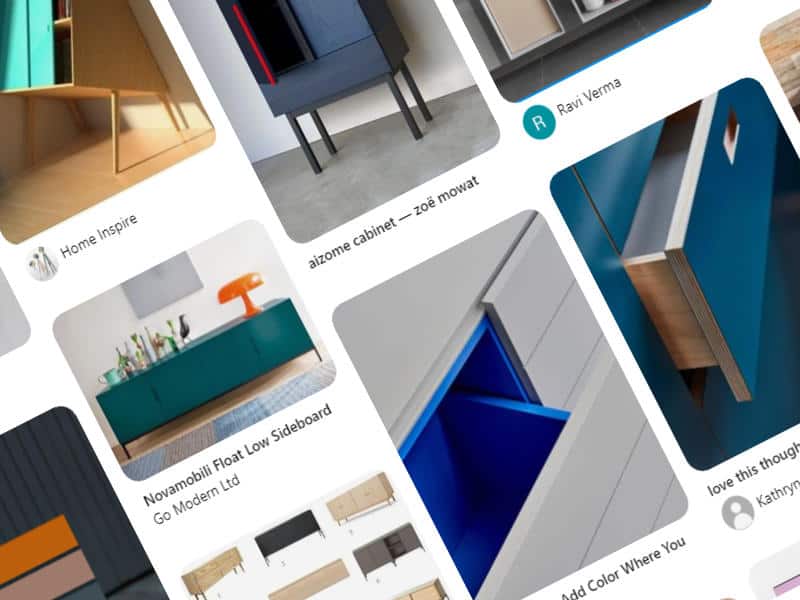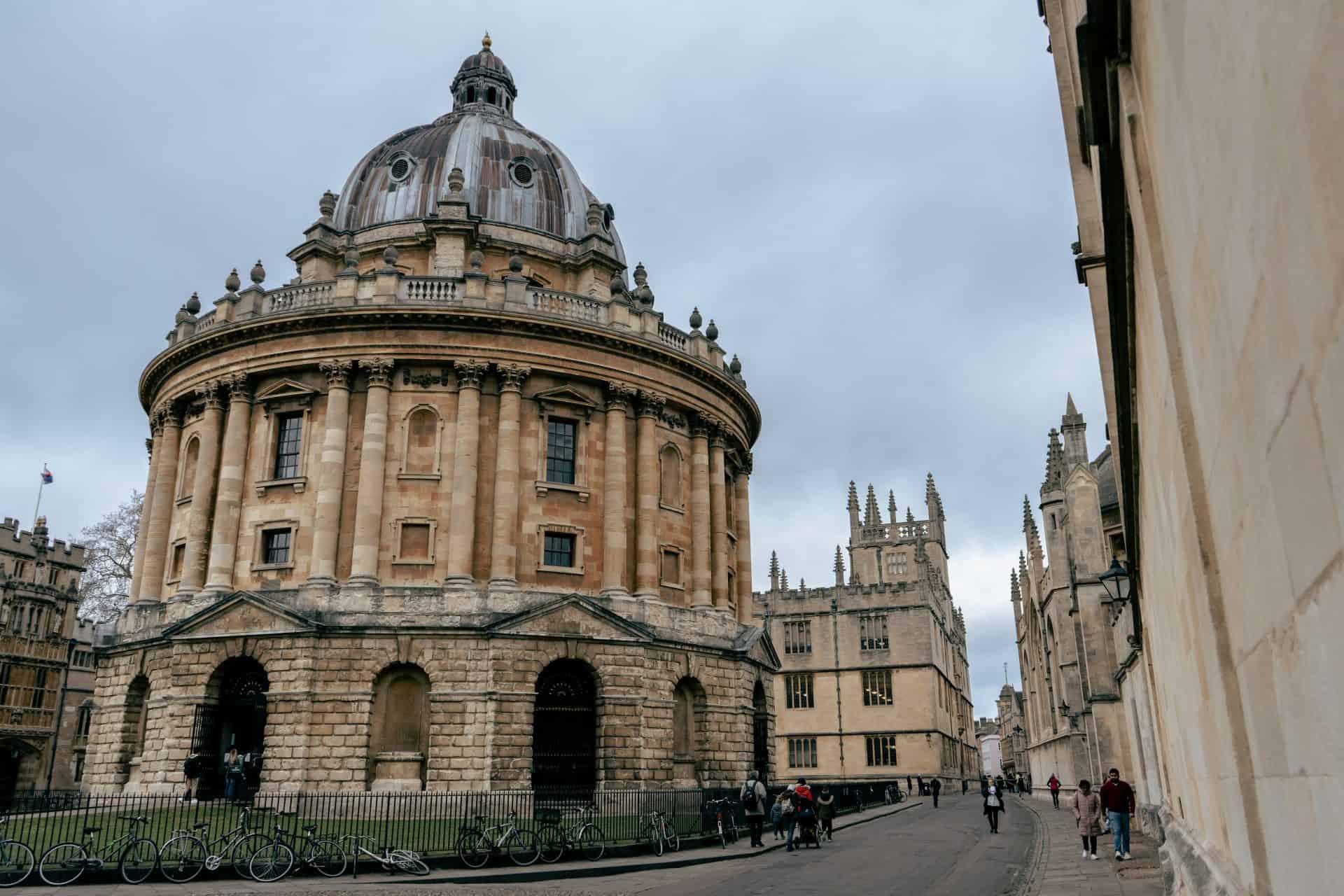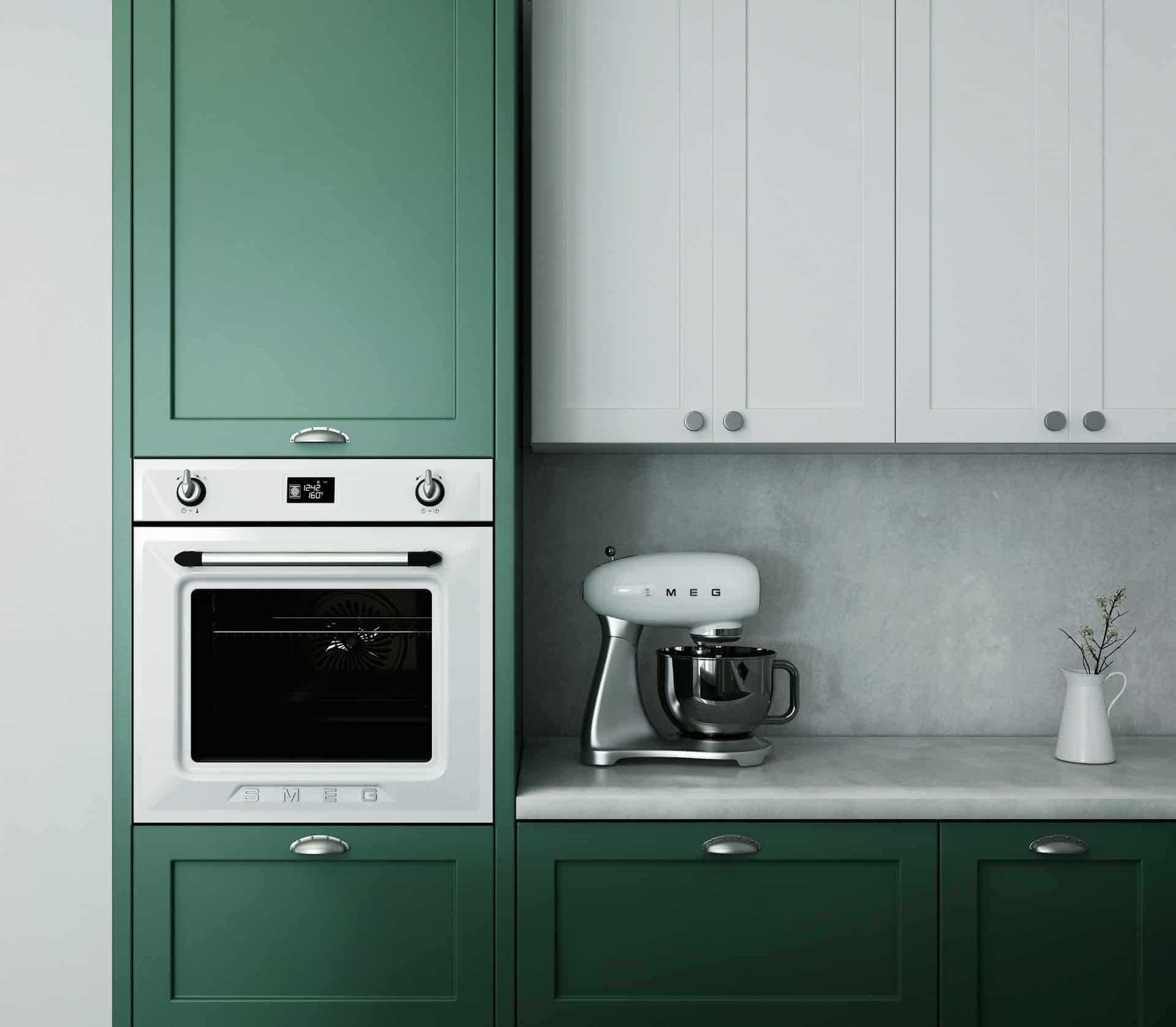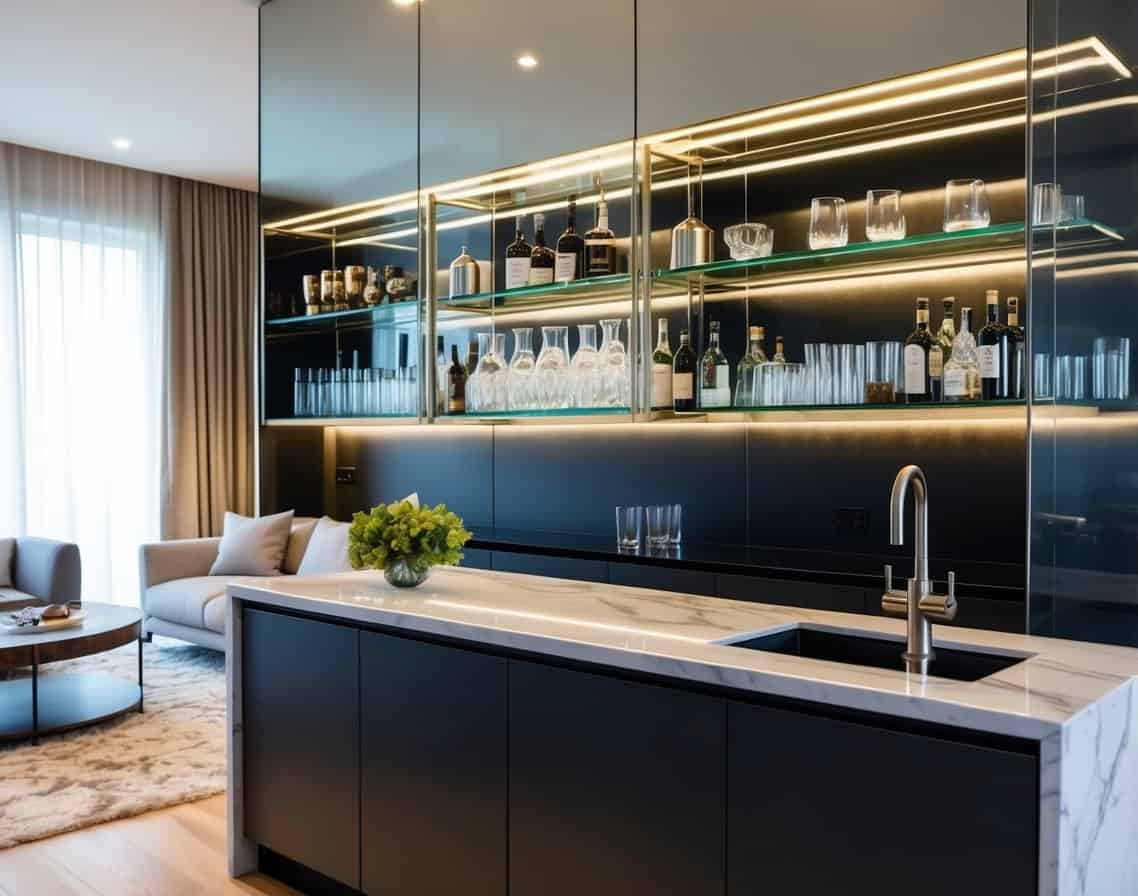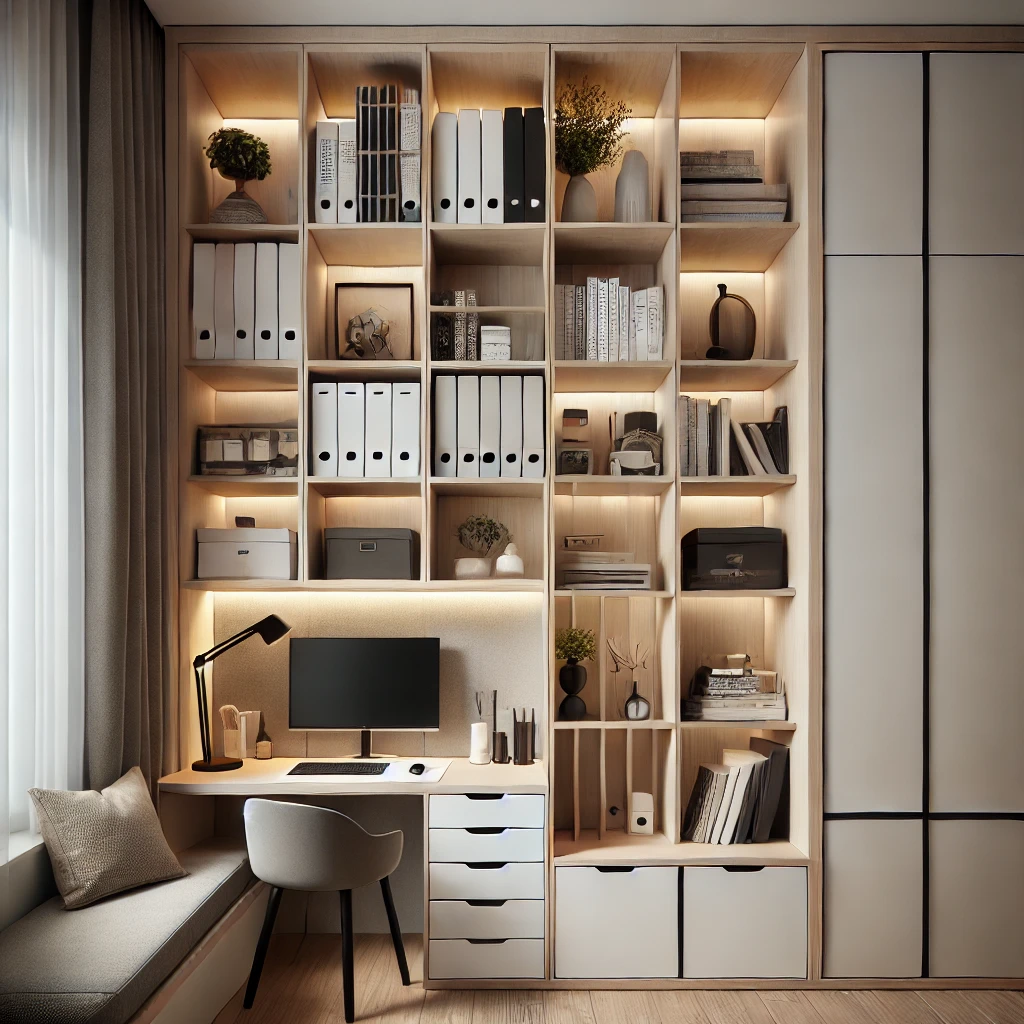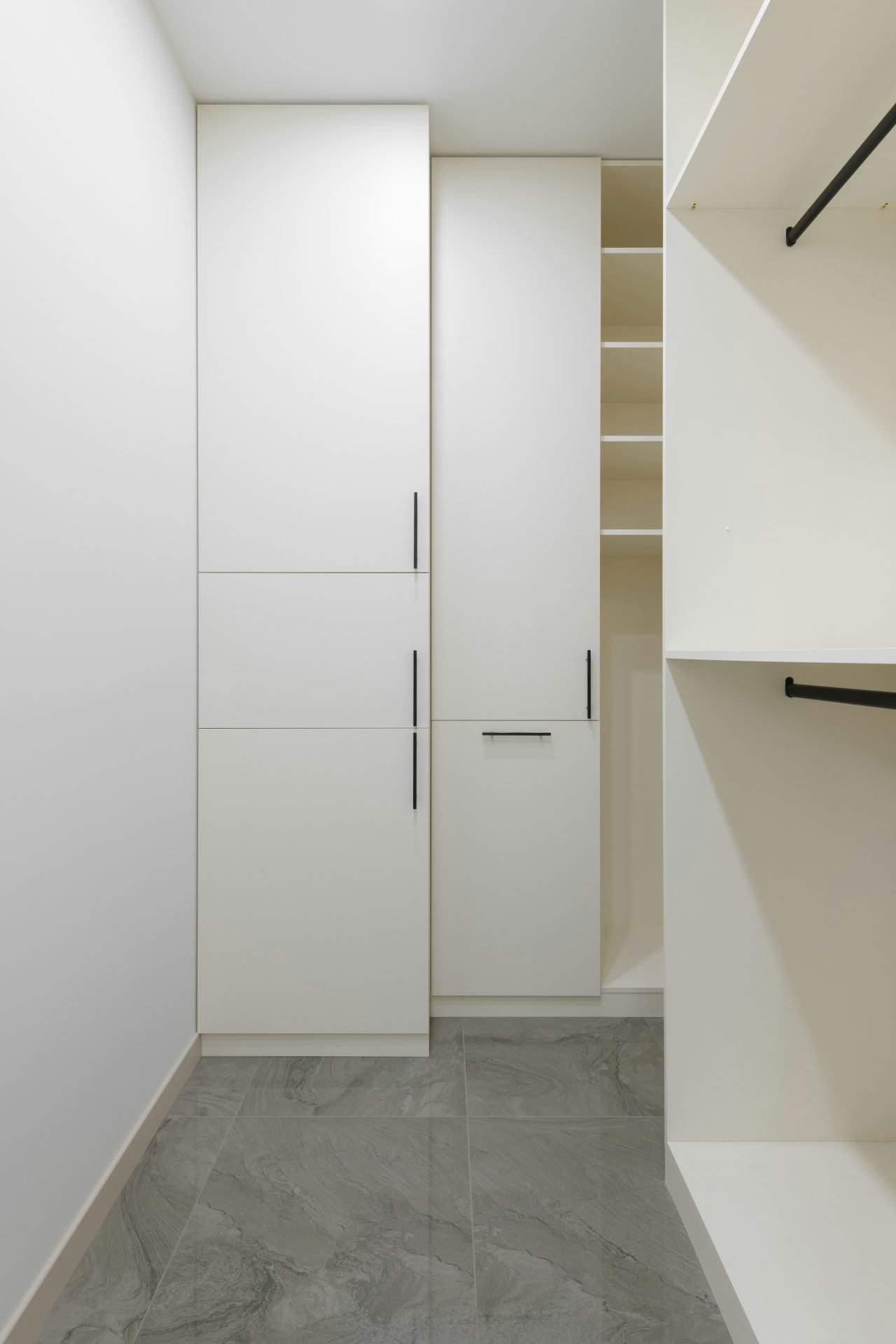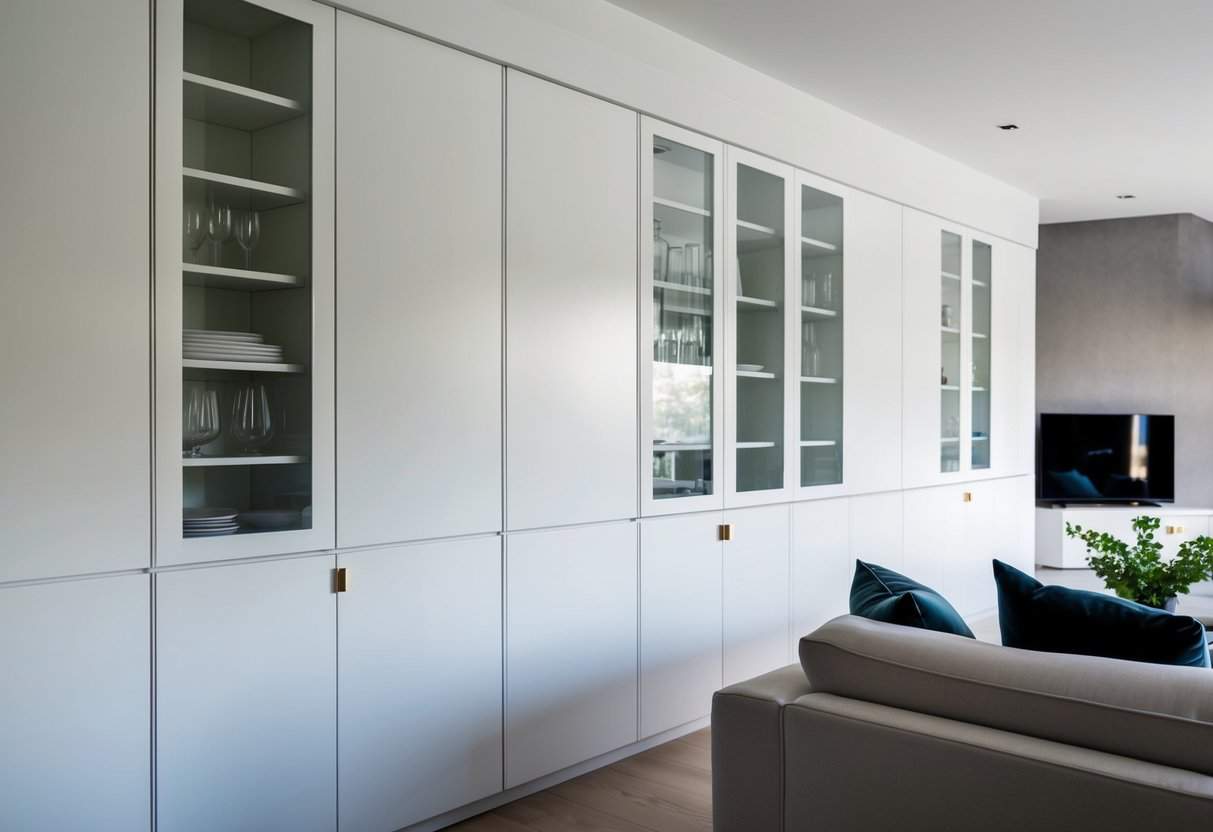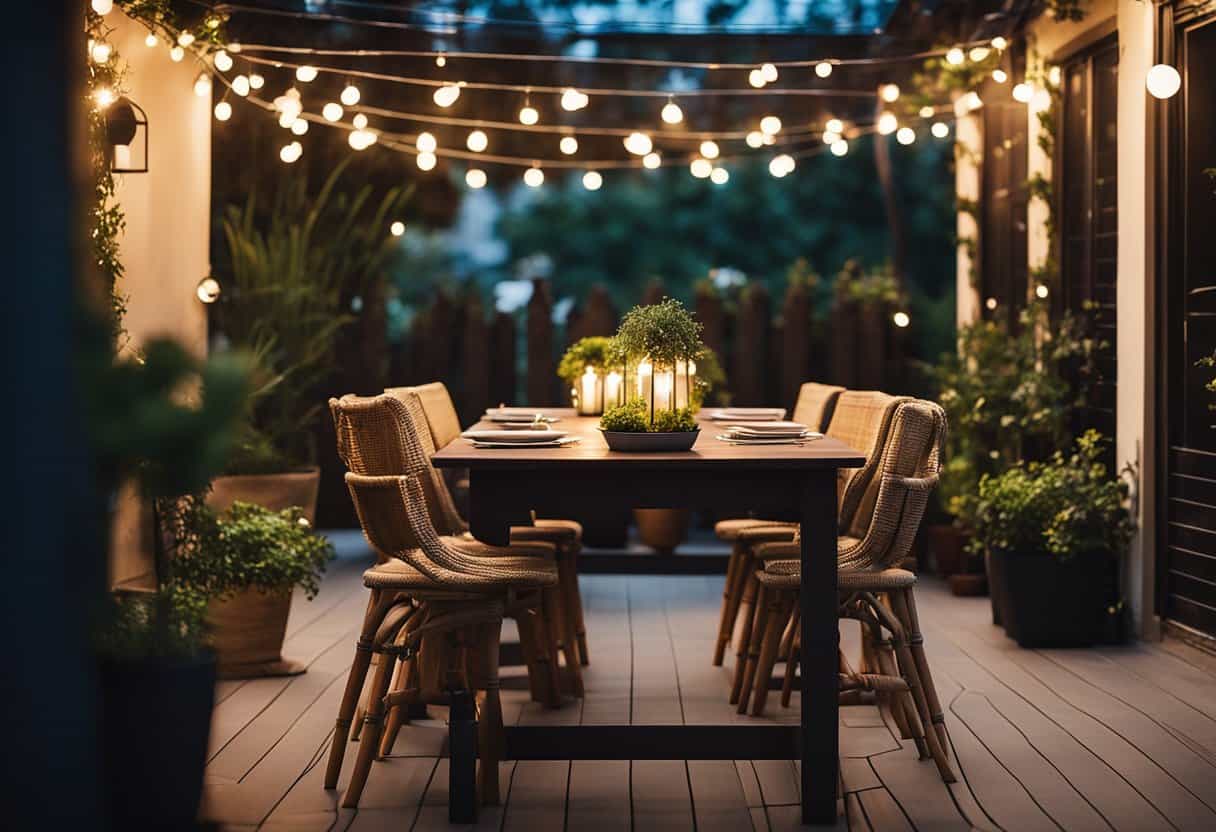Are you planning a home renovation and curious about the costs involved with cabinet makers? Look no further! Understanding the intricacies of cabinet-making prices can help you make informed decisions.
Cabinet makers can cost anywhere from £60 for a simple job to well over £1,200 for more extensive projects involving premium materials. The final price will depend on various factors including the type of materials, the complexity of the design, and the amount of labour required.
When considering a bespoke kitchen, cabinetry can be one of the major costs. Bespoke kitchen cabinets can range from £12,000 to £25,000 depending on the number of units and the complexity of the design.
For specific functionalities like fitted wardrobes, you may be looking at around £1,100 to construct and install, offering you a tailored solution for your storage needs.
Planning and budgeting are crucial, whether you’re revamping your bathroom, kitchen, or living room.
Options like custom TV cabinets range between £300 and £700. If you’re looking to replace all cabinets in a standard family-sized kitchen, prices can start as low as £1,700 and go up to more than £12,000 depending on the quality of materials.
Knowing these figures can help you set realistic expectations and ensure your project runs smoothly.
Key Takeaways
- Cabinet costs vary widely based on materials and project size.
- Bespoke kitchen cabinetry can cost between £12,000 and £25,000.
- Custom TV cabinets and similar projects range from £300 to £700.
Understanding Cabinet Making
When it comes to cabinet making, you need to be aware of the types of cabinets available, the fundamental design elements, and the craftsmanship that goes into creating high-quality pieces.
Types of Cabinets
Cabinets can be categorised into three types: stock cabinets, semi-custom cabinets, and custom cabinets.
Stock cabinets are pre-made and come in standard sizes, making them the most affordable option. They are readily available but offer limited style and size choices.
Semi-custom cabinets provide more flexibility in design. You can modify dimensions and choose from a wider range of finishes and styles. These are more costly than stock cabinets due to their customisation options.
Custom cabinets are entirely built to your specifications. They offer unlimited design possibilities, allowing you to select specific materials, finishes, and hardware. This makes custom cabinets the most expensive, as they require skilled labour and high-quality materials.
Cabinet Design Fundamentals
Designing a cabinet involves several key elements that you should keep in mind.
Materials play a significant role. Common materials include plywood, MDF (medium-density fibreboard), and solid wood. Each has its pros and cons in terms of durability, cost, and appearance.
Hardware like hinges, handles, and drawer slides impact both functionality and style. High-quality hardware ensures smooth operation and longevity.
Finish options include paint, stain, and laminate. These not only affect the aesthetics but also the cabinet’s wear resistance. Choose a finish that complements your overall design scheme.
Layout is crucial. Think about how cabinets will fit into your space and the accessibility of items. Proper layout enhances usability and efficiency, especially in kitchens and bathrooms.
Craftsmanship in Cabinet Making
Craftsmanship is what sets apart a quality cabinet from an ordinary one.
A skilled cabinet maker excels in joinery techniques, ensuring strong and durable connections. Techniques like dovetail joints and mortise and tenon joints are hallmarks of excellent craftsmanship.
Attention to detail is another key factor. Precision in cutting, fitting, and finishing defines a well-crafted cabinet. Each piece should align perfectly, and the surfaces should be smooth and well-finished.
Quality control during the making process is also essential. Consistent checks ensure that the materials and workmanship meet high standards, resulting in a product that not only looks great but also stands the test of time.
Materials and Finishes
When planning for cabinet making, the materials and finishes you choose will greatly affect both the cost and the aesthetic. Here, we break down the most popular materials and finishes to help you make an informed decision.
Popular Cabinet Materials
MDF (Medium-density fibreboard): Affordable and smooth, MDF is easy to paint. However, it can swell with moisture, making it less ideal for bathrooms or other damp areas.
Plywood: More durable than MDF, plywood is made from layers of wood veneer. It resists warping and is a strong choice for kitchen cabinets.
Solid Wood: Offering a premium look and feel, solid wood is expensive but durable. It can also be sanded and refinished multiple times, allowing for long-term use.
| Material | Pros | Cons |
|---|---|---|
| MDF | Affordable, smooth finish | Can swell if wet |
| Plywood | Durable, resists warping | Can be pricier |
| Solid Wood | Premium, durable | Expensive |
Cabinet Finishes and Accessories
Paint: A versatile option that allows you to choose from many colours. It can provide a smooth, modern look but may show wear over time.
Stains: Stains enhance the natural grain of the wood, offering a more traditional look. They are durable and tend to hide scratches better than paint.
Hardware: Handles, knobs, and pulls can significantly impact the look of your cabinets. Choices range from modern stainless steel to classic brass or bronze.
Soft-Close Hinges: A popular upgrade, soft-close hinges prevent doors from slamming and extend the life of the cabinet.
| Finish | Pros | Cons |
|---|---|---|
| Paint | Many colour options, smooth | Shows wear |
| Stain | Enhances natural grain | Limited to wood’s natural tones |
| Hardware | Customisable look | Can add to cost |
| Soft-Close Hinges | Extends life, quiet | Adds to cost |
Customisation Options
Custom kitchen cabinets offer a variety of customisation options that allow you to create a space tailored to your needs. From bespoke features to integrating appliances, these choices can enhance both the functionality and aesthetics of your kitchen.
Bespoke Cabinet Features
When opting for fully customised cabinets, you can choose from a range of bespoke features.
Pegged drawer organisers are ideal for keeping your cutlery and utensils neatly arranged. Meanwhile, tilt-out below-sink organisers provide convenient access to cleaning supplies.
Pull-out trash/recycling can cabinets help maintain a clean and organised look. They hide bins behind a cabinet door, freeing up floor space.
Another popular feature is the pull-out spice rack cabinet, which makes finding and accessing spices easy.
Lazy Susan corner storage and blind corner cabinet pull-out organisers maximise corner space. These features ensure you can access items stored even in the deepest corners.
Adding such bespoke features can make your kitchen more functional and improve the overall storage capacity.
Appliances and Integration
Integrating appliances with your cabinets can result in a seamless and efficient kitchen design.
Many design services can help create cabinets that fit snugly around your appliances, such as ovens, dishwashers, and refrigerators. This creates a unified look and optimises space.
Cabinet accessories like built-in wine racks and microwave nooks offer additional storage without sacrificing style. Pull-out shelves can be installed for heavier appliances like mixers and blenders, making them easy to access and use.
Using clever integrations, such as a hidden charging station for your devices, can keep countertops clutter-free. Consider appliance garages that tuck away toasters and coffee makers out of sight when not in use. This kind of integration makes your kitchen both practical and visually appealing.
Installation and Labour
When hiring a cabinet maker for your kitchen, understanding the installation process and labour costs is essential. Clear expectations help you plan your renovation better and avoid unexpected expenses.
Installation Process
The installation process begins with a detailed assessment of your kitchen space by the cabinet maker. They take precise measurements to ensure the new cabinets fit perfectly.
After planning the layout, the installation team removes old cabinets, if necessary, and prepares the area.
Next, the team installs the new cabinets. This involves fitting base and wall units, ensuring they are level and securely attached.
If there are custom elements, like built-in appliances or special shelving, these are installed carefully according to the design plan.
After mounting, the cabinets are aligned and adjusted. Doors and drawers are attached and adjusted to ensure smooth operation.
Finally, hardware such as knobs and handles are installed, and the finish is inspected. The process is detailed and requires skilled labour to ensure everything is done correctly and safely.
Labour Costs and Considerations
Labour costs for kitchen cabinet installation can vary widely.
Simple installations might cost between £30-£60 per hour. However, complex projects requiring custom cabinetry or extensive modifications can increase this rate significantly.
The cost depends on the cabinet materials, the intricacy of the design, and local market rates.
It’s crucial to factor in the experience of the contractors as well.
Experienced cabinet makers might charge more, but their expertise ensures a higher quality finish.
Some installers might offer a package deal, combining the cost of labour and materials. You should get detailed quotes from multiple contractors to compare prices and services.
Moreover, if repairs are needed during installation, such as addressing plumbing issues, these can add to the labour costs. Make sure to discuss potential additional charges upfront to avoid surprises.
Pricing Structures
When considering the cost of hiring a cabinet maker, there are various pricing structures to keep in mind, including the type of cabinets and the total cost of your project. Factors like material quality and installation complexity will influence the final price.
Cost Breakdown by Cabinet Type
Cabinet costs vary significantly depending on whether you choose stock, semi-custom, or custom cabinets.
Stock cabinets are the most budget-friendly, typically ranging from £85-£110 for small units. Tall kitchen cabinets can cost around £500 each.
Semi-custom cabinets give you more options in terms of style and finish, but they come with a higher price tag.
These can cost between £1,700-£2,200 for a standard family kitchen if you’re handling part of the installation yourself.
For those looking for premium options, custom cabinets can be much more expensive, often ranging from £12,000 to £25,000 depending on the complexity and quality of materials.
Estimating Total Cost
To estimate the total cost of your kitchen remodel, consider the linear foot measurement of cabinets.
The average cost per linear foot for installation ranges from £30 to £60 for basic units. Disposal of old cabinets and additional custom features will add to the total cost.
For a fully professional installation, including removal and disposal, you can expect to pay anywhere from £5,000 to £13,000 according to typical price ranges.
Factors like the complexity of the design and the materials used will significantly influence your budget. For a high-end kitchen, costs could stretch up to £30,000.
Working with Cabinet Makers
Choosing the right cabinet maker for your project involves careful consideration of their skills, qualifications, and availability. Ensuring clear communication and understanding the estimates helps in making informed decisions.
Selecting a Skilled Cabinet Maker
Finding a skilled cabinet maker is crucial for a successful project. Look for professionals with strong recommendations and a portfolio of previous work. Reviews from past clients can give insight into their craftsmanship and reliability.
Use platforms like Checkatrade to find cabinet makers in your area. Pay attention to their experience with projects similar to yours and their ability to customise designs to fit specific needs.
Understanding Qualifications and Credentials
A qualified cabinet maker should have the necessary credentials and insurance to operate legally and safely. Check if they are certified by recognised trade organisations. These certifications ensure that the cabinet maker adheres to industry standards.
It’s also important to verify their insurance coverage to protect against any potential damages or accidents during the project. Knowing their qualifications adds a layer of security to your investment.
Getting Estimates and Availability
Before committing to a cabinet maker, get detailed estimates from multiple professionals. A thorough quote should include the cost of materials, labour, and any additional fees.
Discussing availability is key to ensuring your project timeline aligns with the contractor’s schedule. You can explore more about the costs involved in cabinet making by visiting this Cabinet Maker Cost Guide.
Clear communication about start and end dates helps avoid delays and misunderstandings.
Additional Considerations
When choosing cabinet makers, it’s important to think beyond the immediate cost and installation, considering factors such as applications at home and in the office, maintenance needs, and future trends in cabinet making.
Home and Office Applications
Cabinets serve different purposes in home and office settings.
For home applications, kitchens and bathrooms most often require cabinets. You should look for cabinets that are durable and stylish, matching your home’s decor. Modern kitchen cabinets often feature sleek designs and innovative storage solutions.
In home offices, cabinets provide essential storage for documents and supplies. These should be functional and blend with the room’s aesthetics.
In office settings, cabinets might need to hold heavier files and supplies and should be robust and secure. Opt for materials that can withstand frequent use.
Maintenance and Repairs
Regular maintenance is key to the longevity of your cabinets. Kitchen cabinet repair might be necessary if handles become loose or doors misalign. It’s wise to choose cabinet makers who offer repair services.
For home offices, keeping cabinets clean and free from dust can prevent wear and tear.
Both home and office cabinets might need minor repairs over time, such as tightening screws or adjusting doors. Some cabinet makers offer warranties that include maintenance services. Always check if repairs are covered.
Future Trends in Cabinet Making
Innovations are shaping the future of cabinet making. Modern trends include the use of eco-friendly materials and smart storage solutions.
Technological integration is becoming common, with features like built-in charging stations and smart locks.
Aesthetic trends are also evolving, with a shift towards minimalist designs and bold colours.
Keeping an eye on these trends can help you choose cabinets that not only meet your current needs but also stay relevant in the future. Cabinets that embrace these innovations can add value and functionality to your living or working spaces.
Frequently Asked Questions
Here, you will find answers to common questions about cabinet maker pricing and kitchen installation costs in the UK. The information is designed to help you make informed decisions for your kitchen project.
What is the average cost of installing a new kitchen in the UK?
The cost of installing a new kitchen in the UK varies widely. It can range from £100 for basic setups to £1,600 or more for more comprehensive installations. The price depends on factors such as the size of the kitchen, the materials used, and the complexity of the installation.
How can one calculate the cost of a kitchen using an online calculator like B&Q’s?
To calculate the cost of a kitchen using an online calculator, start by entering the dimensions of your kitchen and selecting the types of cabinets, worktops, and appliances you want. Adjust for any additional features or custom options. This tool provides an estimate based on your specific requirements, helping you budget effectively.
What are the typical expenses associated with a luxury kitchen installation?
Luxury kitchen installations can be quite expensive. Luxury kitchen cabinets often involve high-end materials such as solid wood or painted wood, which are known for their durability and timeless appeal. The overall cost can vary significantly, often influenced by the finishes and custom options chosen.
How are the costs for custom-built cabinetry typically determined?
The costs for custom-built cabinetry are often determined by the materials used, the complexity of the design, and the amount of labour required. Custom TV cabinets, for example, range from £300-£700, while bathroom cabinets might cost between £84-£336.
What hourly rate do cabinet makers generally charge for their services?
Cabinet makers typically charge between £56 and £220 per project, depending on the scope and complexity of the task. For more extensive projects like kitchen cabinets, prices can range from £56 to £280. It’s beneficial to discuss your specific requirements with a cabinet maker for a more accurate quote.
What factors contribute to the profit margin of a cabinet-making business?
Several factors contribute to the profit margin of a cabinet-making business. These include the cost of materials, labour, and overhead expenses. The efficiency of production processes is also a factor.
High-quality materials and skilled labour often result in higher costs. However, they also enable businesses to charge more for their products, impacting the profit margin positively.


